Exercise + Physical Therapy For Neuropathy
foundationforpn.org 2018
Research has shown that strengthening exercises for peripheral neuropathy moderately improve muscle strength in people with PN. In addition, exercises to help peripheral neuropathy, when done regularly, may reduce neuropathic pain and can help control blood sugar levels. A comprehensive physical activity routine includes four kinds of activities:
Aerobic Exercise
Flexibility Exercise
Strength Training Exercise
Balance Exercise
Refer to a physical or occupational therapist, or a healthcare provider, regarding an exercise program that’s right for you.
Physical Therapy
Occupational Therapy
Occupational therapy is instrumental in helping a patient cope with the functional, vocational, and social impact of peripheral neuropathy by:
Improving sensory-motor skills
Teaching the patient to avoid exposure to environmental or industrial toxins
Teaching self-care activities
Teaching the patient safety issues, (e.g., paying more attention to the terrain when walking since falling or tripping may pose a risk for patients with PN)
Teaching the patient to pay attention to issues which involve automatic functions (e.g., learning how to change positions smoothly to avoid a sudden drop in blood pressure and the risk of falling)
Aerobic Exercise
Increases your heart rate, works your muscles, and raises your breathing rate. For most people, it’s best to aim for a total of about 30 minutes a day, between 3-5 days a week. If you haven’t been very active recently, you can start out with 5 or 10 minutes a day and work up to more time each week. Or split up your activity for the day — try a 10-minute walk after each meal.
Here are some examples of aerobic exercise:
Take a brisk walk (outside or inside on a treadmill)
Take a low-impact aerobics class
Swim or do water aerobic exercises
Stationary bicycle indoors
Flexibility Exercises
Flexibility exercises, also called stretching, help keep your joints flexible and reduce your chances of injury during other activities. Gentle stretching for 5 to 10 minutes helps your body warm up and get ready for aerobic activities such as walking or swimming. Here are some flexibility exercises you can do at home.
Check with your physician before beginning any exercise program.

Calf Stretch
Place one leg far behind you with the toe pointed slightly inward. Take a large step forward with the opposite foot. With the front knee slightly bent lean forward keeping your back heel on the floor. You should feel a muscle stretch in the calf of your back leg.
Hold: 15-20 seconds on each leg
Repeat: 3 repetitions each leg/2 times a day.
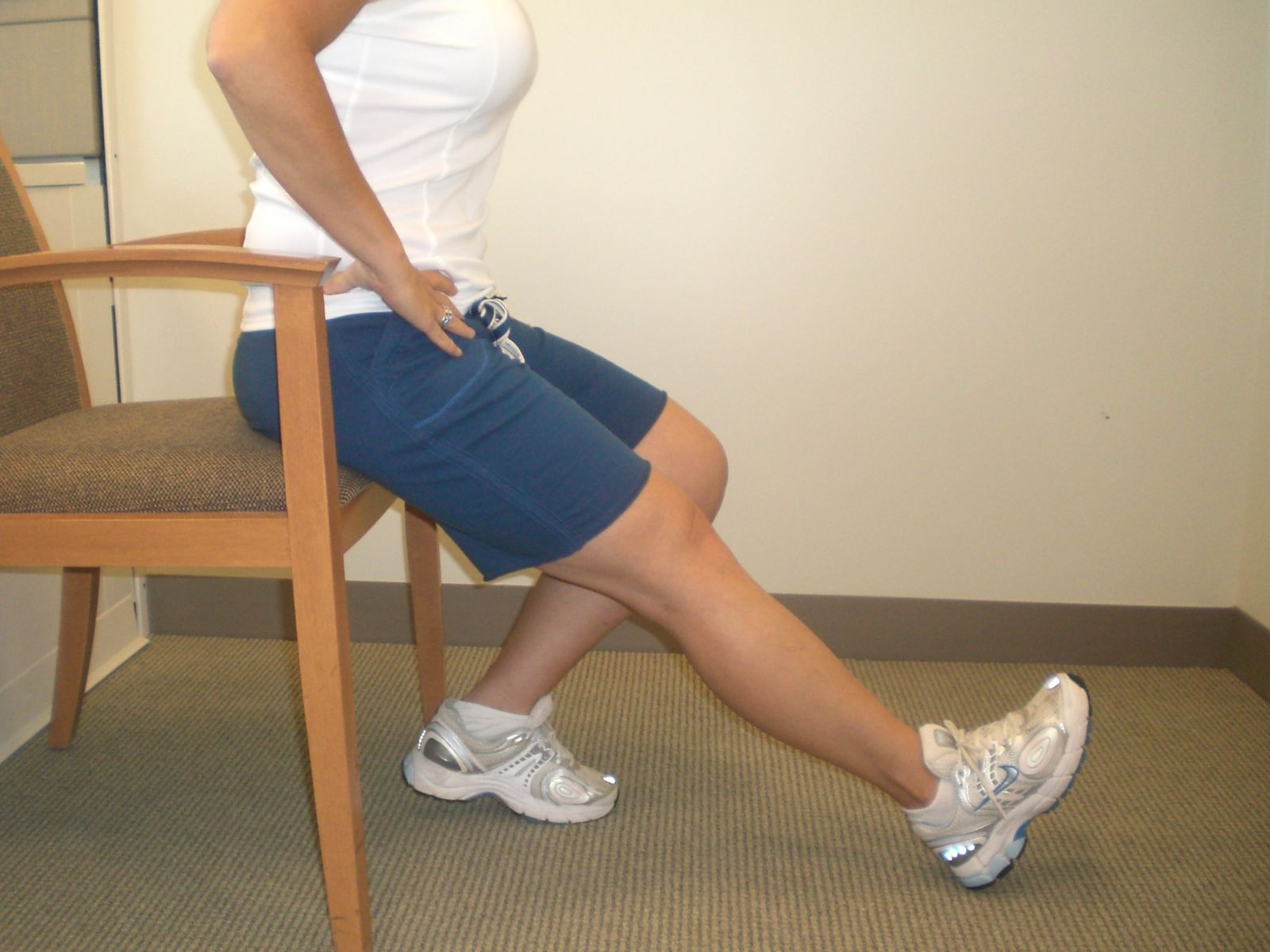
Seated Hamstring Stretch
Sitting on the front half of a firm chair, place one leg out straight with the foot pointing up. Bend the opposite knee so that your foot is flat on the floor. Center your chest over the straight leg, and slowly straighten your back until you feel a muscle stretch in the back of your leg.
Hold: 15-20 seconds on each leg
Repeat: 3 repetitions each leg/ 2 times a day.
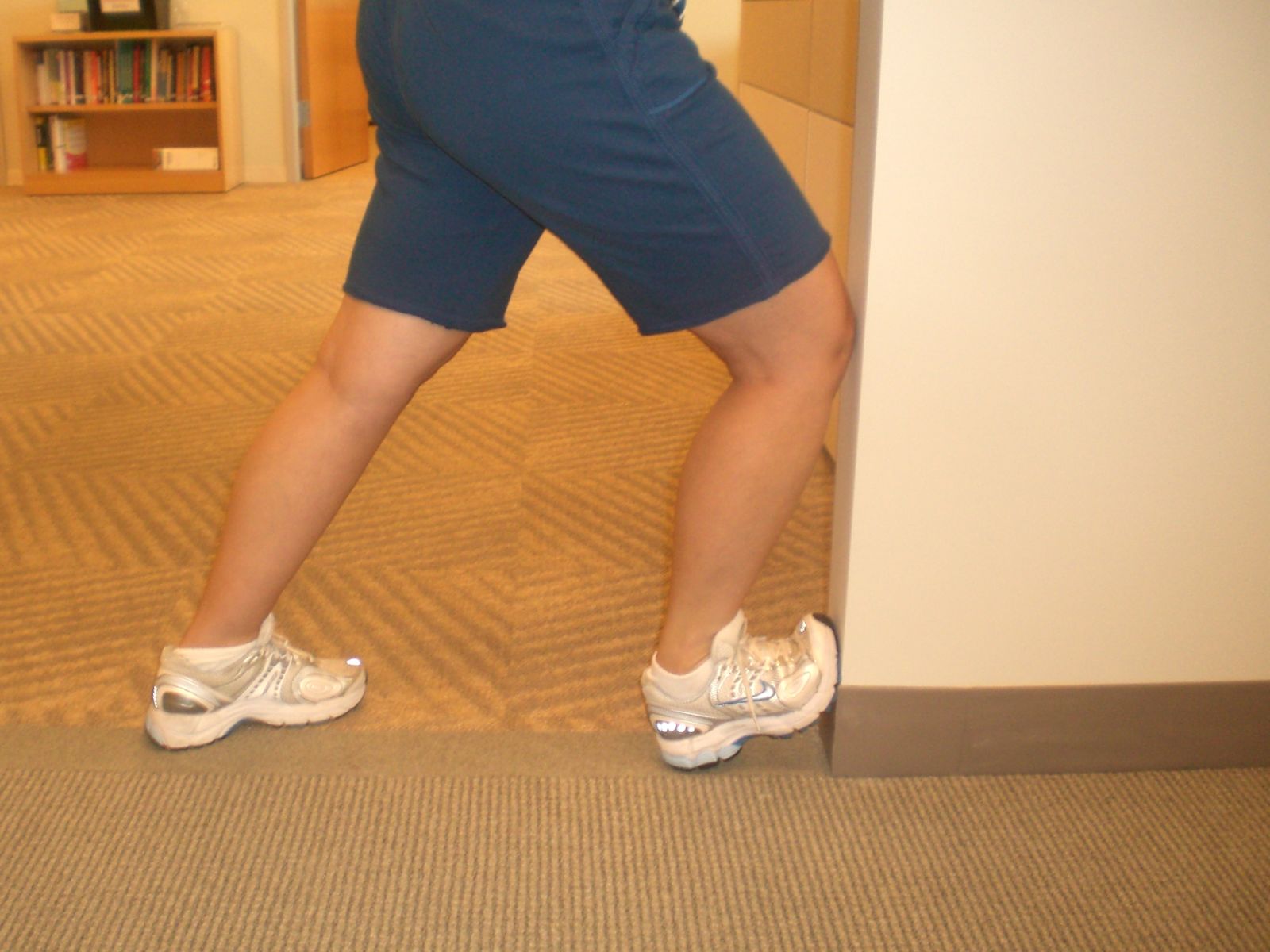 Plantarfascia Stretch
Plantarfascia Stretch While facing a door frame, place your heel as close to the door frame as possible. Slowly lean forward, allowing your heel to slide back as your toes extend upward. To increase the stretch, bend the front knee toward the door frame. You should feel a muscle stretch in the bottom of your foot and along your heel cord.
Hold: 15-20 seconds
Repeat: 3 repetitions each leg/2 times a day.
Strength Training
Strength training exercises help to make the muscles stronger and more injury resistant. It can help you regain lost strength in your muscles through constant training routines. Here are some strength training exercises you can do at home.
Check with your physician before beginning any exercise program.
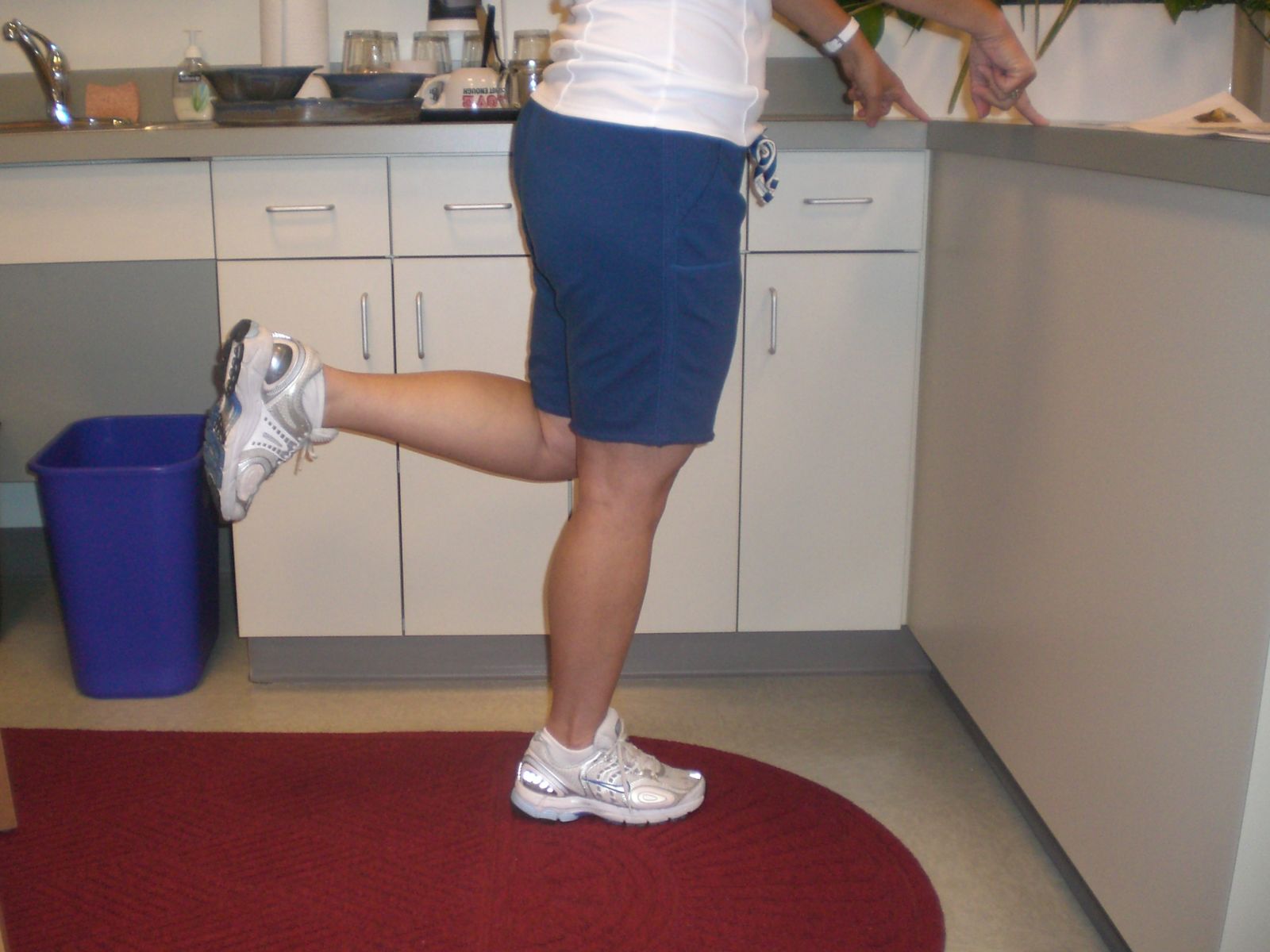 Kitchen Counter Calf Raises
Kitchen Counter Calf Raises While standing at the kitchen counter, place two finger tips on the counter. Stand on one foot lifting the other heel off the floor, standing on your toes (as you strengthen your muscles, try to alternate your heels as shown in the picture below). Slowly lower yourself to the floor and repeat. Once you are on your toes control your lowering Do not just drop down to the floor.
Repeat: 10-15 times
2 repetitions on each leg /2 times a day.
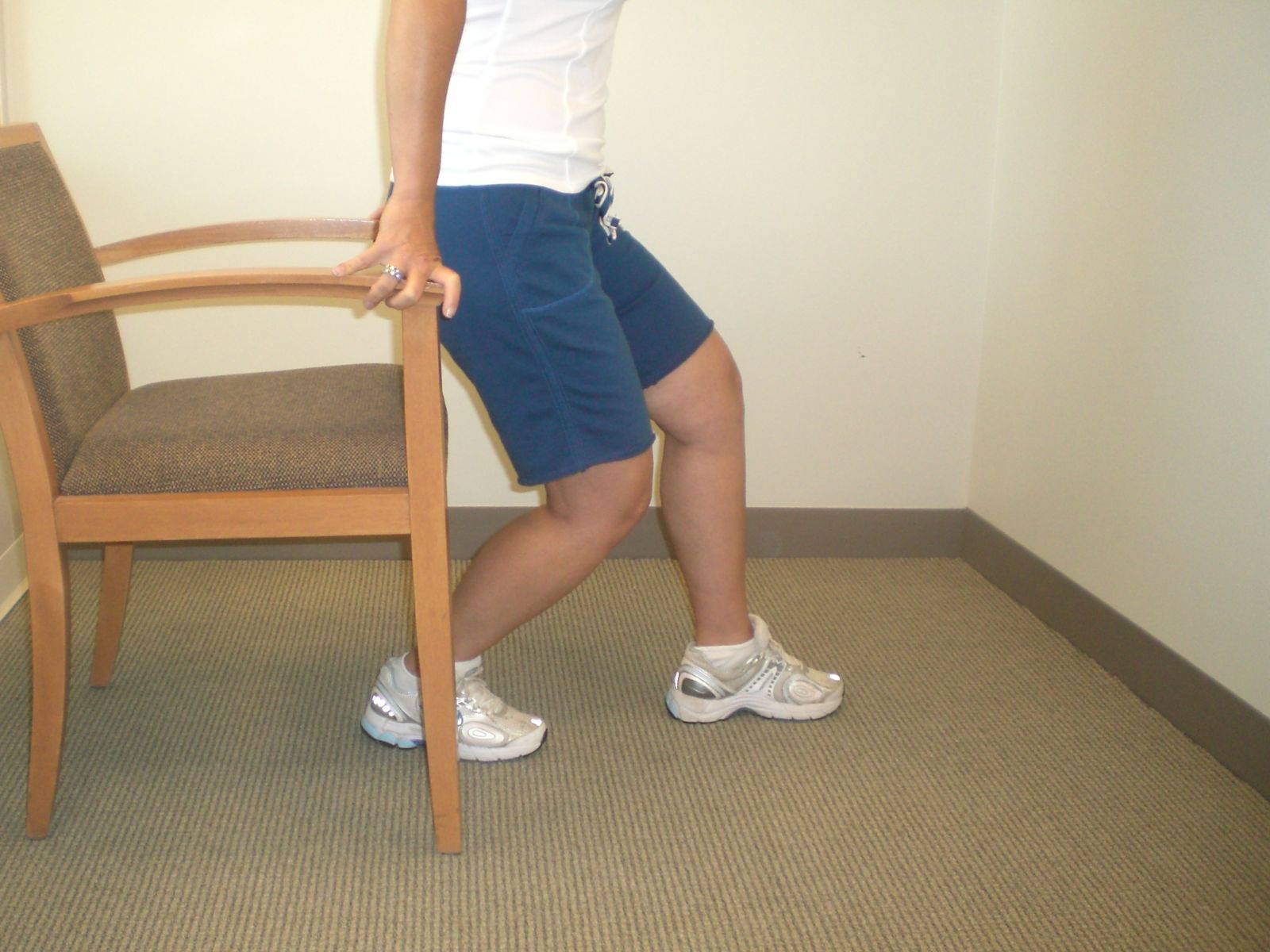 Chair Squat
Chair Squat Using a firm chair with armrests, position your feet in a split stance with one foot at the base of the chair and the other foot placed comfortably in front and slightly out to the side. Slowly transfer your weight forward until your legs are supporting your body weight. Slowly press up with your legs to standing. To lower yourself, slowly reach for the chair with your hips. Touch the chair with your hips and press back up for your next repetition. Do not “plop” in chair or rest in between repetitions.
Repeat: 10 -15 times
2 Repetitions/2 times a day.
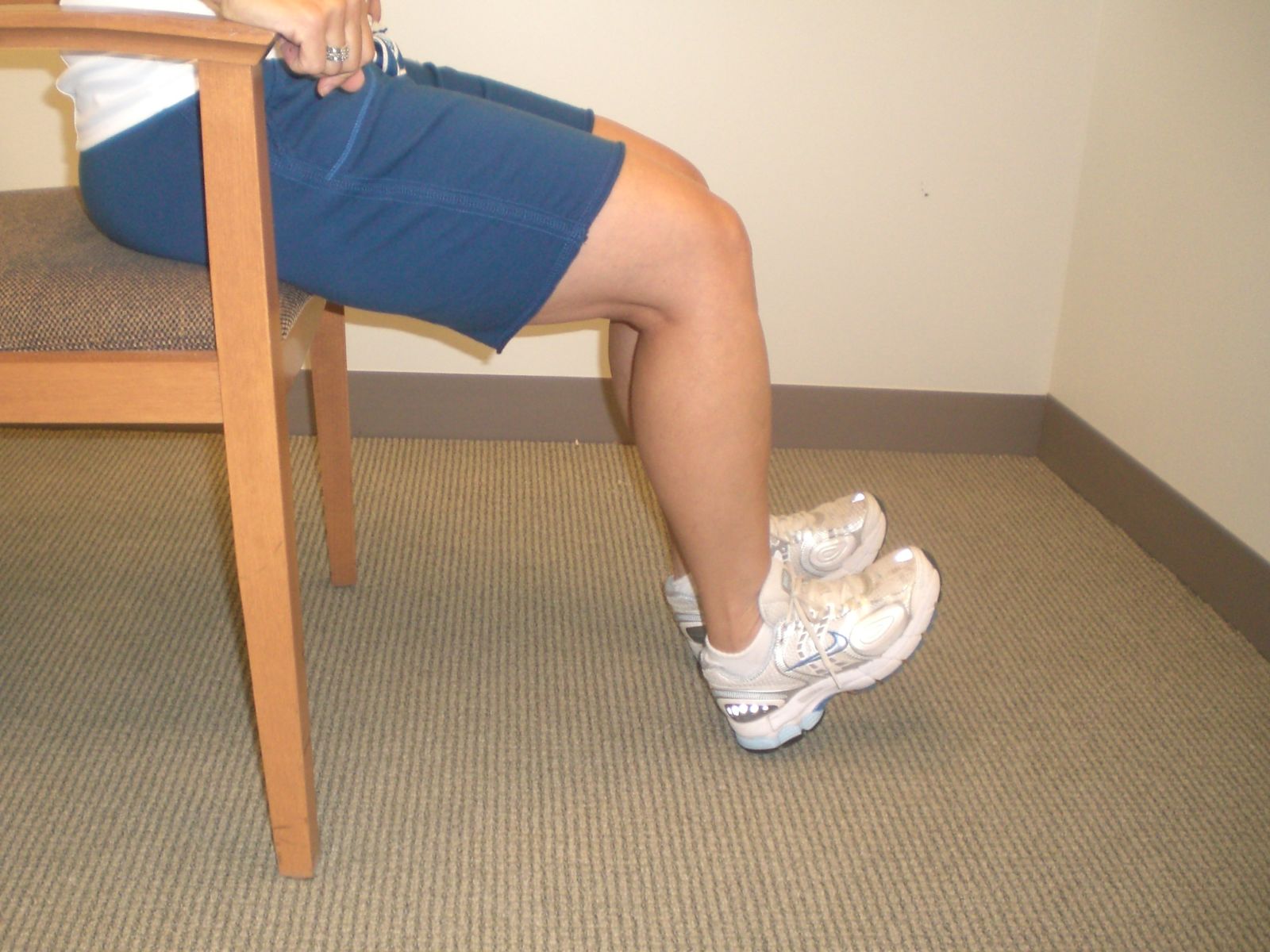
Seated Dorsiflexion
While seating on the front half of a chair place both feet flat on the floor. Gradually pull the toes and ankle up as high as you can. Slowly let them down. To make this exercise more challenging position your feet closer to your body.
Repeat: 10-15 times
3 repetitions/2 times a day.
Balance
Keeping your balance system healthy is especially important if you have problems due to illness, such as joint pain, weakness or dizziness. Balance training can help you get back to normal, and overcome feelings of stiffness or unsteadiness. Balance, in particular, is emerging as an important element for the elderly. Older muscles are smaller and slower and respond less efficiently when you need to brace yourselves, making you more vulnerable to falls.
 Kitchen Counter Calf Raises
Kitchen Counter Calf Raises While standing at the kitchen counter, place two finger tips on the counter. Stand on one foot lifting the other heel off the floor, standing on your toes (as you strengthen your muscles, try to alternate your heels as shown in the picture below). Slowly lower yourself to the floor and repeat. Once you are on your toes control your lowering Do not just drop down to the floor.
Repeat: 10-15 times
2 repetitions on each leg /2 times a day.

Hip Flexion
Hold table or chair with one hand, then one fingertip, then no hands; then do exercise with eyes closed, if steady. Stand straight: holding onto table or chair for balance. Slowly bend one knee toward chest, without bending waist or hips. Hold position for 5-10 seconds. Slowly lower leg all the way down. Repeat with other leg.
Hold: 5-10 seconds
Repeat: 2 repetitions on each leg/2 times a day.
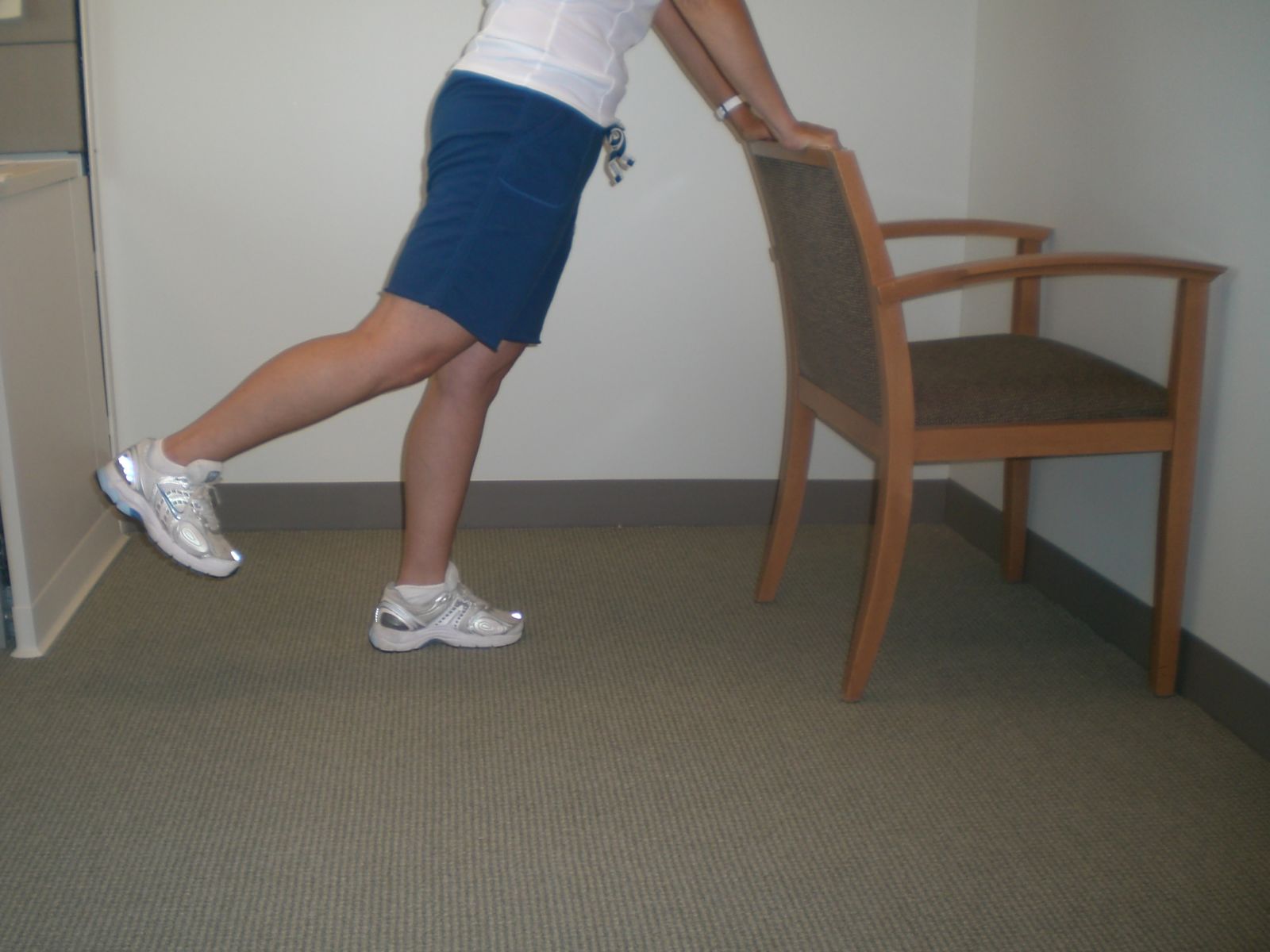 Hip Extension
Hip Extension Hold chair or table with one hand, then one fingertip, then no hands; then do exercise with eyes closed, if steady. Stand 12 to 18 inches from chair or table. Bend at hips; hold onto chair or table. Slowly lift one leg straight backwards. Hold position for 5-10 sections. Slowly lower leg and repeat with other leg.
Hold: 5-10 seconds
Repeat: 2 repetitions on each leg /2 times a day
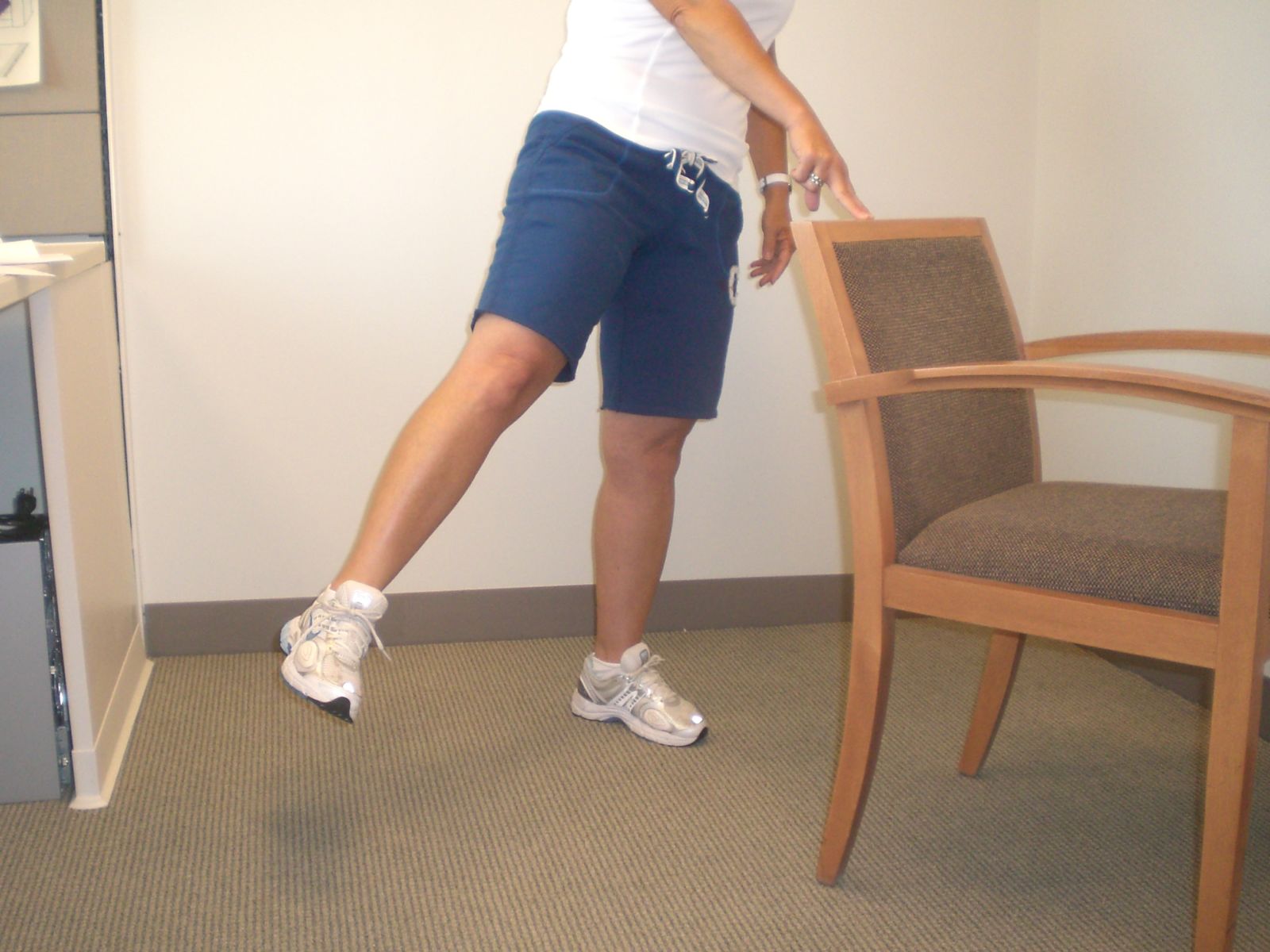 Side Leg Raise
Side Leg Raise Hold chair or table with one hand, then one fingertip, then no hands; then do exercise with eyes closed, if steady. Stand straight, directly behind chair or table, feet slightly apart. Hold chair or table for balance. Slowly lift one leg to side, 6-12 inches. Slowly lower leg and repeat with other leg. Your back and knees are straight throughout exercise.
Hold: 5-10 seconds
Repeat: 2 repetitions on each leg/2 times a day
https://www.foundationforpn.org/living-well/lifestyle/exercise-and-physical-therapy/

No comments:
Post a Comment
All comments welcome but advertising your own service or product will unfortunately result in your comment not being published.